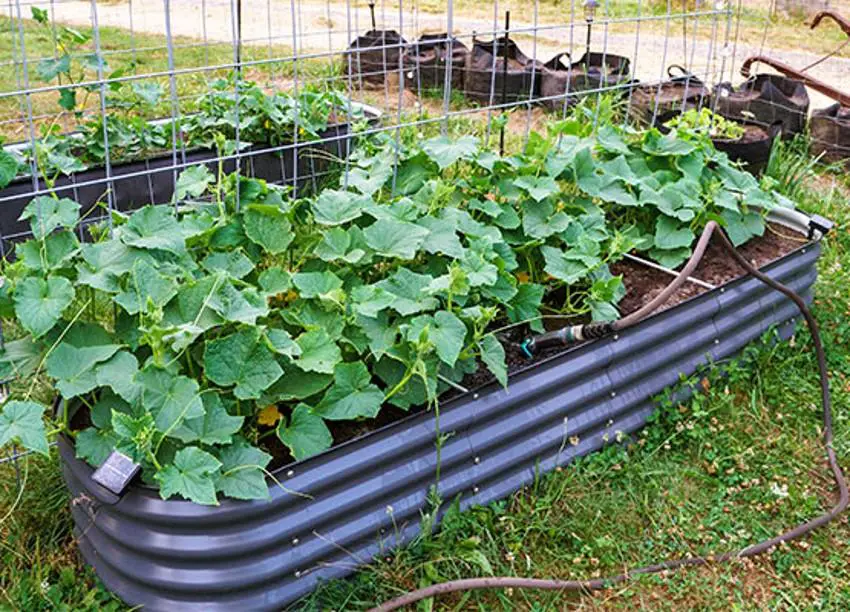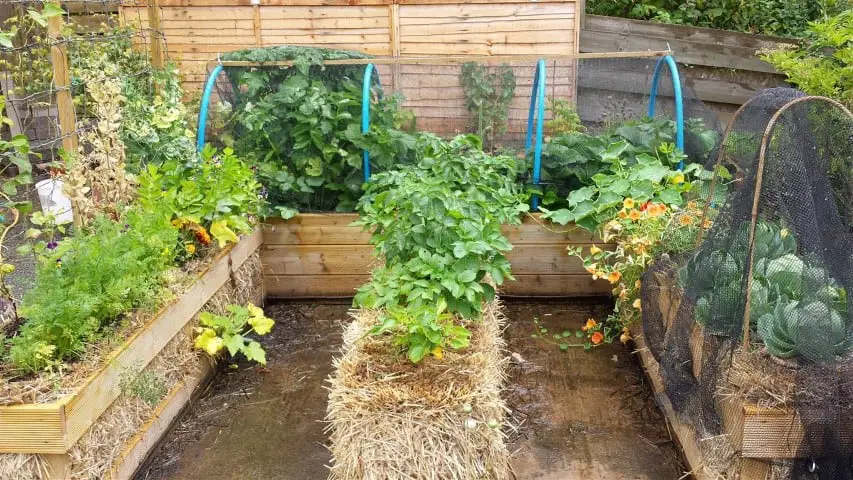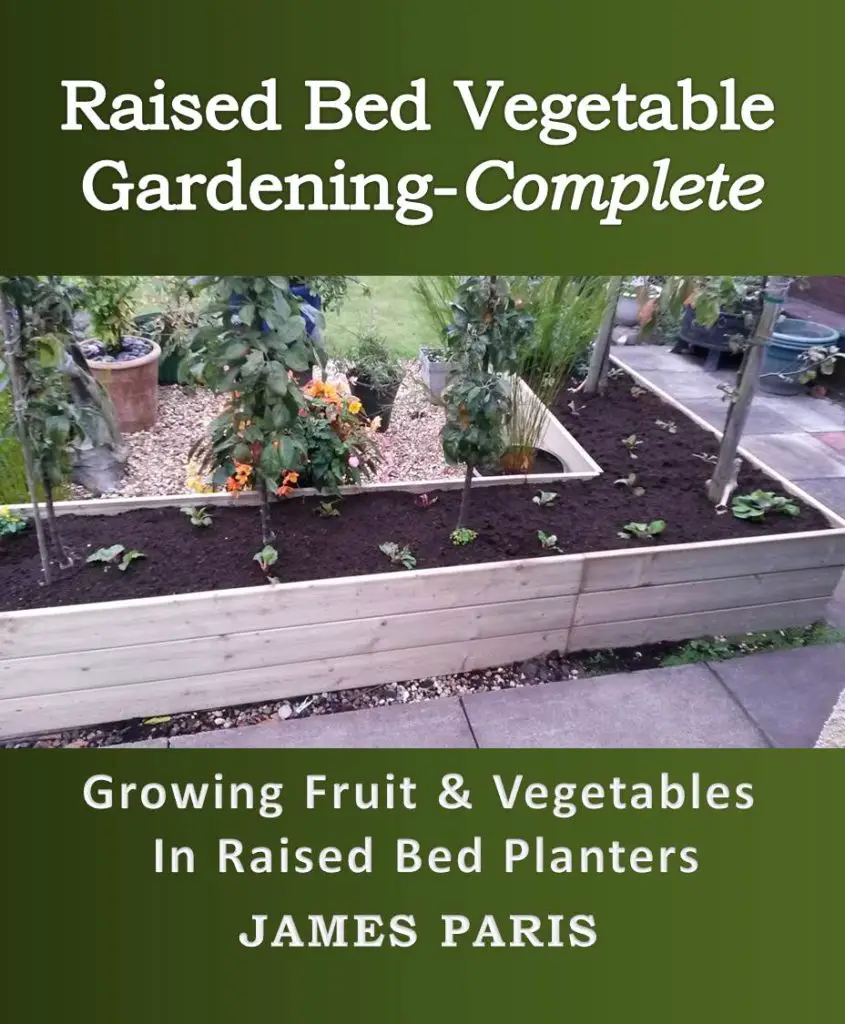When it comes to vegetable gardening, there is a lot of material written about raised garden beds. Much of it by this author!
Few gardeners however, consider the disadvantages of raised beds over other gardening methods.

This article though, will take a closer look at Raised beds. And consider the pro’s and cons of raised bed gardening.
Starting with the top 6 disadvantages of this method.
- Raised Beds are costly to create. There is no doubt that the initial setting up of a raised bed system can make a massive hole in the finances. The costs including timber and infill for a deep beds can be several hundred dollars. (or pounds for my British friends). Yes there are ways to reduce these costs substantially. Using reclaimed timber and filling with your own home-made compost. The bottom line is that for many folks who don’t have their own compost heap. Not the skills or resources to build their own raised beds – this cost can be a major drawback.
- Expensive to buy ready made. If you do not have the skills or resources to make your own beds then you have of course the option to buy ready-made. There is a multitude of different styles to choose from including corrugated steel.
 Composite or timber clad beds – and they are all fairly expensive! A typical basic square bed measuring 4 x 4 foot (120cm square) and 12 inches high without a base costing around $100. Prices do vary a lot, and the compost infill adding a further $60 for approx 500 litres. A small basic raised bed can easily cost over $160 and upwards if you take the ready-made option.
Composite or timber clad beds – and they are all fairly expensive! A typical basic square bed measuring 4 x 4 foot (120cm square) and 12 inches high without a base costing around $100. Prices do vary a lot, and the compost infill adding a further $60 for approx 500 litres. A small basic raised bed can easily cost over $160 and upwards if you take the ready-made option. - Not always convenient. If you already have a good area of fertile ground to grow in, then the raised bed option
 may not be what you need. Not everyone likes to see rows of wooden structures dotted over their garden. Nor the infrastructure to operate them such as paved pathways between the beds. Open free-flowing gardens is the choice for some folks. This is especially if they wish to grow rows and rows of a single crop to sell on the open market for instance.
may not be what you need. Not everyone likes to see rows of wooden structures dotted over their garden. Nor the infrastructure to operate them such as paved pathways between the beds. Open free-flowing gardens is the choice for some folks. This is especially if they wish to grow rows and rows of a single crop to sell on the open market for instance. - Raised Beds need regular replacement. The fact is that even if you use treated timber or galvanised iron, in time everything decays or wears. Even composite artificial wood can become brittle and crack over enough time. Wooden structures in particular need regular maintenance after first 2-3 years working life. More so if you are using untreated timbers that are not rot-resistant like cedar or walnut.
- Raised beds are fixed in place. Whilst this is not regarded as a disadvantage by many people. The fact is that once a bed is set in place then it is a major upheaval if you wish to – or have to – move it to another location. This may be because you are giving your veggie garden a makeover, or you fancy a different view from the window! Moving a raised bed to another location means digging out all the soil. Then putting it in a heap whilst you try and dismantle a frame in one piece that has been standing for several years. This is not something to take lightly if you want an easy life in the garden!
- Can dry out quickly. Another disadvantage of the Raised Garden Bed is that it can dry out fast. Particularly if it has not been lined with plastic or landscaping fabric. This is especially so for the stand alone type that have a free flow of air around the structure.
Typical Raised Bed Systems:

There are several gardening methods that come under the umbrella of ‘raised Beds’. Many of which you may not recognise or indeed have ever seen used. Here some of the methods I have used and indeed still do – along with some ‘negative’ input.
- Basic Raised Beds. These consist of a simple wooden frame either square or rectangular and from 6 inches to 30 inches high. This also encompasses the Square Foot Garden method. This is a gardening method that uses a raised bed to its best advantage.
- Stand-alone garden Beds: This is a Raised bed with a base built in. This will stand alone on legs and set to the hight and depth according to usage. The main disadvantage of these beds, is they can dry out in hot dry climates.
- Planters & Pots. These can be described as Raised beds inasmuch as they are a way of planting that is not row gardening. As they are raised from the ground surface. Cost of material is the biggest downside. Possibly because they have bases fitted which means more material.
- Keyhole Gardens. This
 is a form of raised bed that is popular throughout Africa particularly. It creates a growing area for vegetables that would not grow in the local conditions. This is a serious structure that take some effort to operate – but is very productive.
is a form of raised bed that is popular throughout Africa particularly. It creates a growing area for vegetables that would not grow in the local conditions. This is a serious structure that take some effort to operate – but is very productive. - Hugelkultur garden. A Hugelbed
 is a garden mound built out of a mound of forest waste and topsoil. This can be (and often is) encompassed in a wooden framework. This is a cheap way to fill a deep bed, which is often seen as the biggest disadvantage of the raised bed system.
is a garden mound built out of a mound of forest waste and topsoil. This can be (and often is) encompassed in a wooden framework. This is a cheap way to fill a deep bed, which is often seen as the biggest disadvantage of the raised bed system. - Straw bale gardening. Is another form of raised bed and indeed is perhaps one of the cheapest methods to set up. The major cost is only the straw bales and the fertilizer to prime the bales. These can also be used within a wooden framework. This actually increases the lifetime of the bale itself to about 3 years.
So there we have 6 reasons why you may not want to consider raised bed gardening for your vegetable plot. This includes other raised gardening methods that fit this particular post.
There are of course many excellent reasons to consider a raised bed garden. but that is not the remit of this article so we will not examine this positive aspect of raised garden beds here.
Of course there is no perfect system for growing veggies that will suit every individual. Along with their circumstances be it physical, financial or financial.
But I remain convinced that there are ‘horses for courses’ as they say. In other words, you must firstly consider your own circumstances. and then decide on the gardening method that would suit you best . There are indeed many to choose from!

